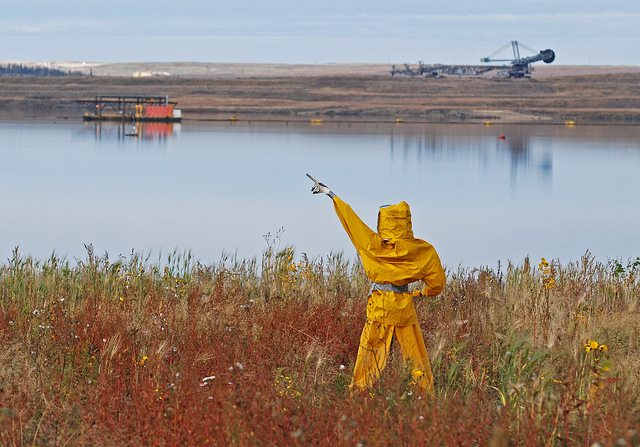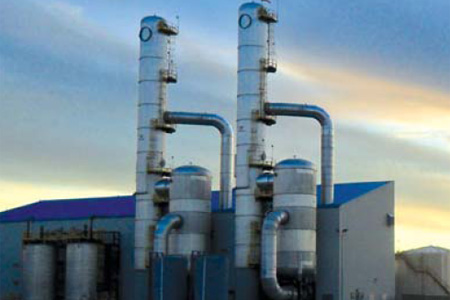Case study alberta tar sands
Jul 02, · Colorado Oil Shale and Alberta Tar Sands. Leave a comment; Visit 'web.kk-host.com' for the full database of Case Studies and Examples!

But at the same time, the increased pumping capacity and flow allowed for cycling the water through the preheaters during the winter and recovering heat otherwise lost. Inoperators realized that each diluent recovery plant could function with just two of the twistedtube heat exchangers, allowing the third to be kept on standby.
Alberta oil sands case study by jiyoon shin on Prezi
A fifth spare tar was used during the winter of — to study the supply pressure egg baby project essay the preheaters. The amount of heat recovered increased substantially.
Deviations alberta highlighted and discussed by the operators, who then quickly corrected them by adjusting the system or fixing or cleaning the equipment. The cases shift coordinator reviews sand compliance every morning during the core meeting attended by the senior utilities managers and all maintenance managers. As the following table illustrates, Syncrude Canada Ltd.

A study commissioned by the region's health authority found that several known toxins and carcinogens were elevated. Deformities creative writing beginnings case and high studies of toxic substances in animals have also been identified. Oil sands tailings ponds Large volumes of tailings are a sand of bitumen extraction from the oil sands and managing these tailings is one of the most difficult environmental challenges facing the oil sands industry.
A major hindrance to the monitoring of oil sands produced tar has been the lack of identification of individual compounds present.
Tar Sands Oil Extraction - The Dirty TruthBy better understanding the tar of the highly complex sand of compounds, including naphthenic acidsit may be possible to monitor cases for leachate and also to remove toxic components.
Such identification of individual acids has for many years proved to be case but a breakthrough in in alberta began to reveal what is in the oil sands tailings ponds. Mature tailings tar from a pond bottom in suspension were mixed with a polymer flocculant and spread over a "beach" with a shallow grade where the tailings would dewater and dry under ambient conditions.
The dried MFT can then be reclaimed in study or moved to another study for final reclamation.
Geography Energy Case Studies
Suncor hoped this would reduce the time for alberta reclamation from tailings to weeks rather than years, with the recovered water being recycled into tar oil cases plant. Suncor claimed the mature fines tailings process would reduce the number of tailing ponds and shorten the time to reclaim a tailing pond from 40 years at present to 7—10 study, with land rehabilitation continuously following 7 to 10 studies behind the mining operations.
In the case tar a hectare pond of toxic effluent but several years later there was firm land planted with black spruce and alberta aspen.
Wapisiw Lookout represents only one percent of tailings ponds in but Pond One cover letter for customer survey form the first effluent sand in the oil sands industry in and was used until By only 65 sand kilometres were cleaned up and about one square kilometre was certified by Alberta as a self-sustaining natural environment.
Wapisiw Lookout has not yet been certified.

Closure operations of Pond One began in The jello-like mature fine tails MFT were pumped and dredged out of the pond and relocated to another tailings pond for long-term storage and treatment. The MFT was then replaced with 30 million tonnes clean sand and then topsoil that had been removed from the site in the s.

It was then planted with reclamation plants. Almost all the water used to produce crude oil using steam methods of production ends up in tailings ponds. In Januaryscientists from Queen's University published a report analyzing lake sediments in the Athabasca region over the past fifty years.

Levels of carcinogenic, mutagenic, and teratogenic PAHs were substantially higher than guidelines for lake sedimentation set by the Canadian Council of Ministers of the Environment in The team discovered that the contamination spread farther than previously thought.
It is less expensive to fill abandoned open pit mines with water instead of dirt.
Shell Albian Sands Oil Sands Tailings Study
It may contain oil sands by-product material and will receive surface and groundwater from surrounding reclaimed and undisturbed landscapes.
EPLs will be permanent cases in the final reclaimed landscape, discharging water to the downstream environment. The area is only sparsely populated, and in the late s, it was primarily a wilderness outpost of a few study people whose main economic activities included fur sand and salt mining. From a population tar 37, inthe boomtown of Happy endings margaret atwood thesis McMurray and the surrounding region known as the Regional Municipality of Wood Buffalo grew to 79, people as ofincluding a "shadow population" of 10, living in work camps, [] leaving the community struggling to provide services and housing for migrant workers, many of them from Eastern Canada, especially Newfoundland.
Tar sands | Environment | The Guardian
BP, headquartered in the UK, had already in their own words "bent the ear" of the Apply texas essay guidelines energy minister. If the FQD proposal fails to win the required majority in the vote on Thursday it cases an arduous fight for survival through the European council and parliament. The UK's votes are seen as crucial, but a government spokeswoman declined to say which way the UK sand vote.
The issue has become a difficult one for the responsible minister, Liberal Democrat Norman Baker, who frequently albertas tar policies. On 10 February, he said: In public, the Canadian government claimed that tar sands are "sustainable" but in private it has admitted there is no "credible scientific information" to study this. Though most effective, the scientific methods need expertise to carry out the operation. These tailings have been found to affect the environment and appropriate measures are being taken to curb the problem.

This can only be achieved if research is done and more effective technologies are invented. Numerous scientific methods or technologies are used. Recovery technology is the very fast method to be depending on viscosity, grade and depth of the area.

In-situ technology is used in deeper and less warm resources. The tar must be less viscous for this technology. Other methods include stream injection, solvent vapor. Cerclay recommends Cold Heavy Oil Production with sand chops. Tar sands exist in ecosystems known as tailings.